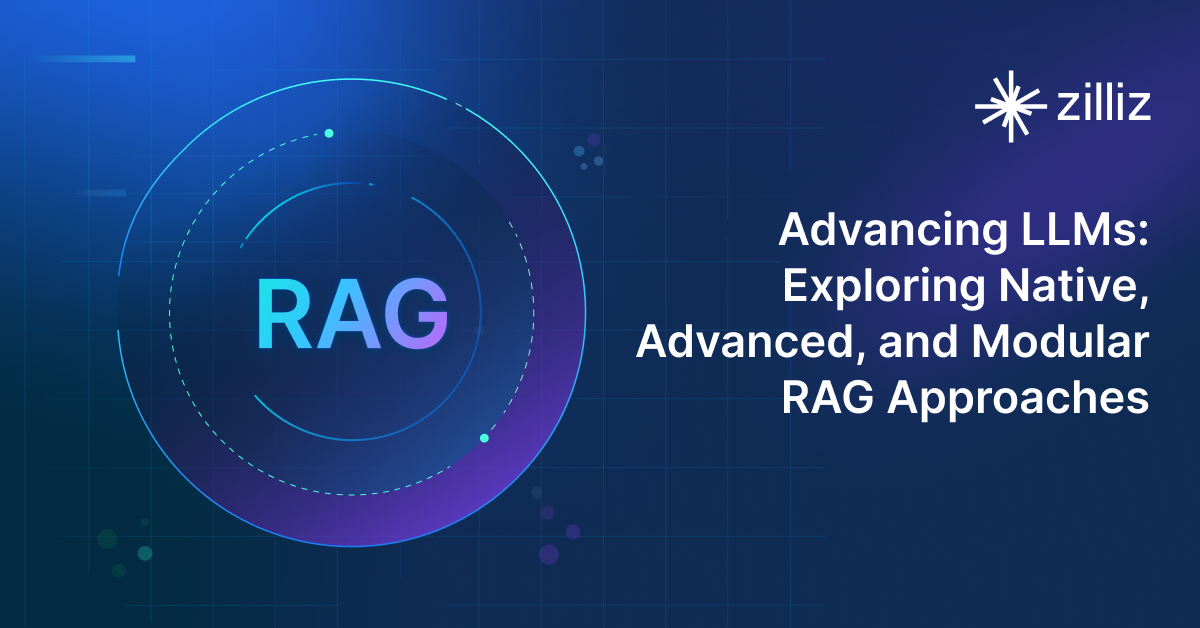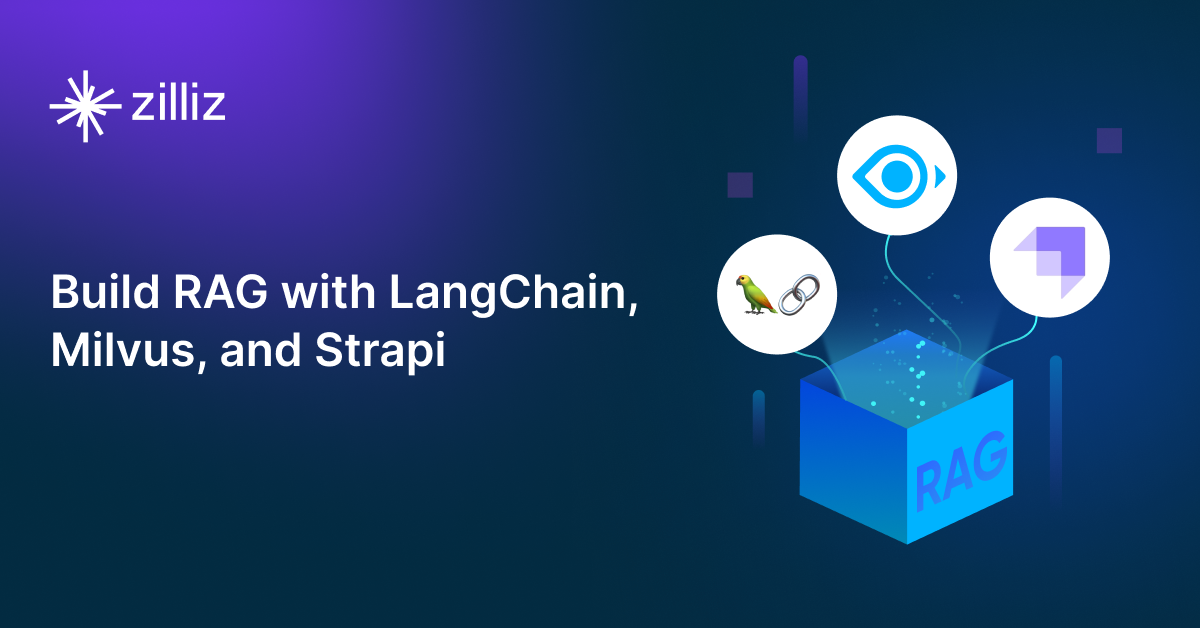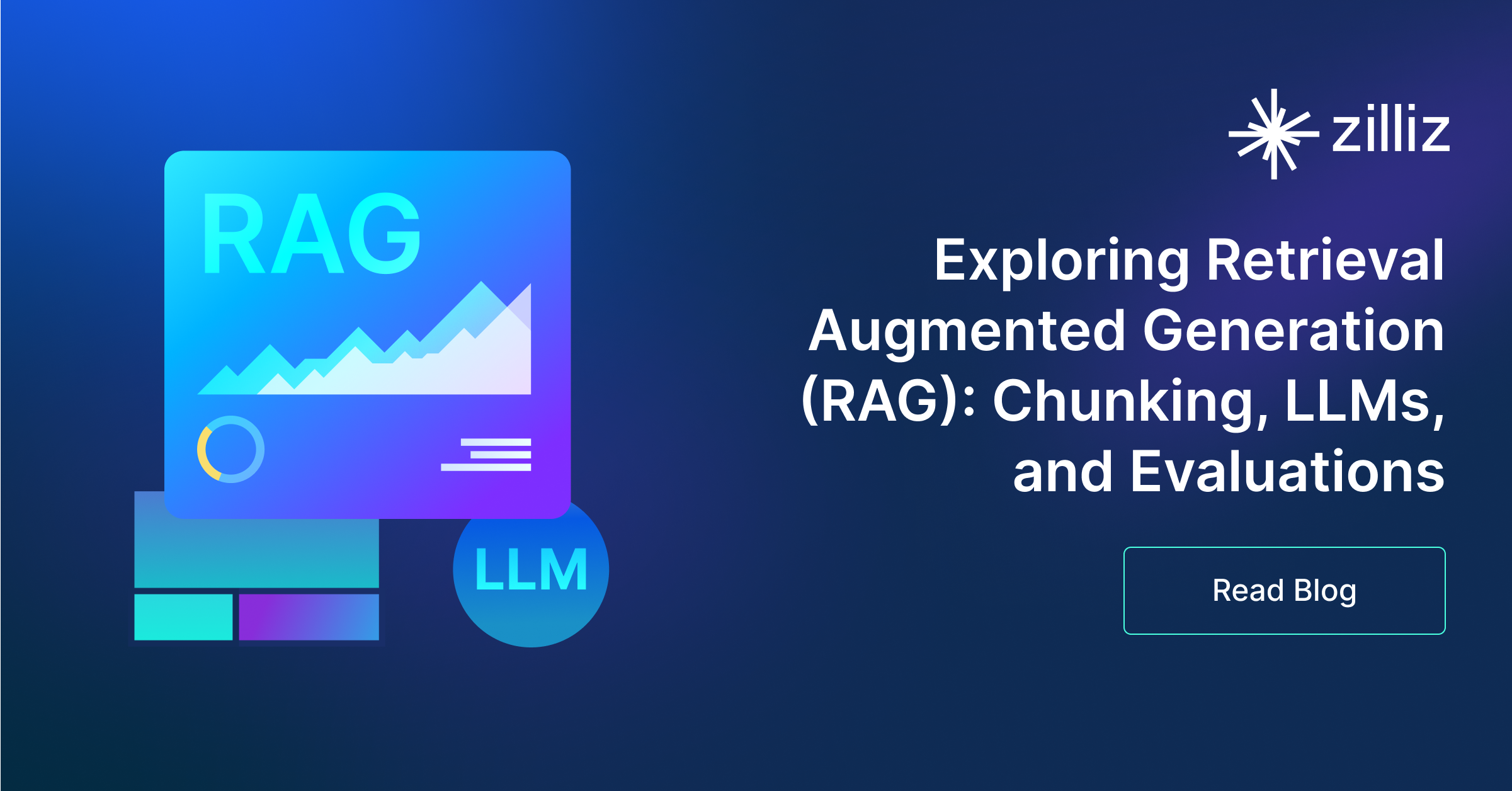Build RAG Chatbot with LangChain, Faiss, Cohere Command R+, and NVIDIA embed-qa-4
Introduction to RAG
Retrieval-Augmented Generation (RAG) is a game-changer for GenAI applications, especially in conversational AI. It combines the power of pre-trained large language models (LLMs) like OpenAI’s GPT with external knowledge sources stored in vector databases such as Milvus and Zilliz Cloud, allowing for more accurate, contextually relevant, and up-to-date response generation. A RAG pipeline usually consists of four basic components: a vector database, an embedding model, an LLM, and a framework.
Key Components We'll Use for This RAG Chatbot
This tutorial shows you how to build a simple RAG chatbot in Python using the following components:
- LangChain: An open-source framework that helps you orchestrate the interaction between LLMs, vector stores, embedding models, etc, making it easier to integrate a RAG pipeline.
- Faiss: also known as Facebook AI Similarity Search, is an open-source vector search library that allows developers to quickly search for semantically similar multimedia data within a massive dataset of unstructured data. (If you want a much more scalable solution or hate to manage your own infrastructure, we recommend using Zilliz Cloud, which is a fully managed vector database service built on the open-source Milvus and offers a free tier supporting up to 1 million vectors.)
- Cohere Command R+: This model specializes in rapid retrieval and dense text understanding, prioritizing performance in search and information extraction tasks. With enhanced contextual awareness, it delivers accurate results, making it ideal for applications in customer support, content recommendation, and enterprise search solutions that demand high efficiency and relevance in responses.
- NVIDIA embed-qa-4: This model specializes in question answering tasks, leveraging cutting-edge embedding techniques to enhance accuracy and comprehension. Its strengths lie in understanding context and retrieving precise information effectively. Ideal for applications in customer support, educational platforms, and any domain needing rapid, context-aware responses to user inquiries.
By the end of this tutorial, you’ll have a functional chatbot capable of answering questions based on a custom knowledge base.
Note: Since we may use proprietary models in our tutorials, make sure you have the required API key beforehand.
Step 1: Install and Set Up LangChain
%pip install --quiet --upgrade langchain-text-splitters langchain-community langgraph
Step 2: Install and Set Up Cohere Command R+
pip install -qU "langchain[cohere]"
import getpass
import os
if not os.environ.get("COHERE_API_KEY"):
os.environ["COHERE_API_KEY"] = getpass.getpass("Enter API key for Cohere: ")
from langchain.chat_models import init_chat_model
llm = init_chat_model("command-r-plus", model_provider="cohere")
Step 3: Install and Set Up NVIDIA embed-qa-4
pip install -qU langchain-nvidia-ai-endpoints
import getpass
import os
if not os.environ.get("NVIDIA_API_KEY"):
os.environ["NVIDIA_API_KEY"] = getpass.getpass("Enter API key for NVIDIA: ")
from langchain_nvidia_ai_endpoints import NVIDIAEmbeddings
embeddings = NVIDIAEmbeddings(model="NV-Embed-QA")
Step 4: Install and Set Up Faiss
pip install -qU langchain-community
from langchain_community.vectorstores import FAISS
vector_store = FAISS(embedding_function=embeddings)
Step 5: Build a RAG Chatbot
Now that you’ve set up all components, let’s start to build a simple chatbot. We’ll use the Milvus introduction doc as a private knowledge base. You can replace it with your own dataset to customize your RAG chatbot.
import bs4
from langchain import hub
from langchain_community.document_loaders import WebBaseLoader
from langchain_core.documents import Document
from langchain_text_splitters import RecursiveCharacterTextSplitter
from langgraph.graph import START, StateGraph
from typing_extensions import List, TypedDict
# Load and chunk contents of the blog
loader = WebBaseLoader(
web_paths=("https://milvus.io/docs/overview.md",),
bs_kwargs=dict(
parse_only=bs4.SoupStrainer(
class_=("doc-style doc-post-content")
)
),
)
docs = loader.load()
text_splitter = RecursiveCharacterTextSplitter(chunk_size=1000, chunk_overlap=200)
all_splits = text_splitter.split_documents(docs)
# Index chunks
_ = vector_store.add_documents(documents=all_splits)
# Define prompt for question-answering
prompt = hub.pull("rlm/rag-prompt")
# Define state for application
class State(TypedDict):
question: str
context: List[Document]
answer: str
# Define application steps
def retrieve(state: State):
retrieved_docs = vector_store.similarity_search(state["question"])
return {"context": retrieved_docs}
def generate(state: State):
docs_content = "\n\n".join(doc.page_content for doc in state["context"])
messages = prompt.invoke({"question": state["question"], "context": docs_content})
response = llm.invoke(messages)
return {"answer": response.content}
# Compile application and test
graph_builder = StateGraph(State).add_sequence([retrieve, generate])
graph_builder.add_edge(START, "retrieve")
graph = graph_builder.compile()
Test the Chatbot
Yeah! You've built your own chatbot. Let's ask the chatbot a question.
response = graph.invoke({"question": "What data types does Milvus support?"})
print(response["answer"])
Example Output
Milvus supports various data types including sparse vectors, binary vectors, JSON, and arrays. Additionally, it handles common numerical and character types, making it versatile for different data modeling needs. This allows users to manage unstructured or multi-modal data efficiently.
Optimization Tips
As you build your RAG system, optimization is key to ensuring peak performance and efficiency. While setting up the components is an essential first step, fine-tuning each one will help you create a solution that works even better and scales seamlessly. In this section, we’ll share some practical tips for optimizing all these components, giving you the edge to build smarter, faster, and more responsive RAG applications.
LangChain optimization tips
To optimize LangChain, focus on minimizing redundant operations in your workflow by structuring your chains and agents efficiently. Use caching to avoid repeated computations, speeding up your system, and experiment with modular design to ensure that components like models or databases can be easily swapped out. This will provide both flexibility and efficiency, allowing you to quickly scale your system without unnecessary delays or complications.
Faiss Optimization Tips
To enhance the performance of the Faiss library in a Retrieval-Augmented Generation (RAG) system, begin by selecting the appropriate index type based on your data volume and query speed requirements; for example, using an IVF (Inverted File) index can significantly speed up queries on large datasets by reducing the search space. Optimize your indexing process by using the nlist parameter to partition data into smaller clusters and set an appropriate number of probes (nprobe) during retrieval to balance between speed and accuracy. Ensure the vectors are properly normalized and consider using 16-bit or 8-bit quantization during indexing to reduce memory footprints for large datasets while maintaining reasonable retrieval accuracy. Additionally, consider leveraging GPU acceleration if available, as Faiss highly benefits from parallel processing, leading to faster nearest neighbor searches. Continuous fine-tuning and benchmarking with varying parameters and configurations can guide you in finding the most efficient setup specific to your data characteristics and retrieval requirements.
Cohere Command R+ optimization tips
Cohere Command R+ is an advanced model optimized for retrieval-heavy workloads, making it essential to refine context selection and ranking mechanisms. Use Cohere’s reranking models to sort retrieved passages based on semantic relevance, ensuring only the most pertinent information is processed. Optimize token economy by segmenting documents into meaningful chunks and limiting unnecessary context, preventing prompt overloading. Adjust retrieval depth dynamically based on query complexity—broader searches for complex queries and narrower ones for straightforward prompts. Fine-tune temperature and sampling parameters based on use cases, with lower values ensuring more reliable, factual outputs. For high-throughput applications, implement asynchronous processing and parallel query execution to improve efficiency. Caching and pre-generating responses for frequently accessed topics can significantly reduce inference costs and improve response time. Regularly test and refine retrieval configurations based on user feedback and performance analytics to maintain high-quality outputs in RAG workflows.
NVIDIA embed-qa-4 optimization tips
NVIDIA embed-qa-4 is a high-performance embedding model optimized for question-answering tasks in RAG systems. Improve retrieval efficiency by generating embeddings at both the document and sentence levels, allowing for granular matching. Use similarity threshold tuning to balance precision and recall when retrieving documents. For large-scale applications, employ GPU-accelerated ANN search frameworks such as FAISS with optimized indexing parameters. Cache frequently used embeddings to reduce API overhead and speed up query processing. When handling dynamic knowledge bases, implement scheduled re-embedding of updated documents to maintain search relevance. Consider fine-tuning retrieval pipelines by integrating metadata-based filters alongside vector search for improved contextual accuracy.
By implementing these tips across your components, you'll be able to enhance the performance and functionality of your RAG system, ensuring it’s optimized for both speed and accuracy. Keep testing, iterating, and refining your setup to stay ahead in the ever-evolving world of AI development.
RAG Cost Calculator: A Free Tool to Calculate Your Cost in Seconds
Estimating the cost of a Retrieval-Augmented Generation (RAG) pipeline involves analyzing expenses across vector storage, compute resources, and API usage. Key cost drivers include vector database queries, embedding generation, and LLM inference.
RAG Cost Calculator is a free tool that quickly estimates the cost of building a RAG pipeline, including chunking, embedding, vector storage/search, and LLM generation. It also helps you identify cost-saving opportunities and achieve up to 10x cost reduction on vector databases with the serverless option.
 Calculate your RAG cost
Calculate your RAG cost
What Have You Learned?
What Have You Learned?
Congratulations on reaching the finale of this exciting tutorial! You've just unlocked the secrets of building a powerful Retrieval-Augmented Generation (RAG) system by skillfully weaving together a framework, a vector database, a large language model (LLM), and an embedding model. Isn’t it exhilarating to see how these components come together to create a seamless, intelligent system?
With the framework you've learned, you now have a solid backbone that effectively ties all these elements, facilitating communication and functionality. The vector database, powered by Faiss, has shown you just how fast and efficient your searches can be, ensuring that you retrieve the most relevant information in the blink of an eye. Then there’s the LLM—think of it as the brain of your application! With its conversational intelligence, it enables your system to understand and respond to user queries in an incredibly human-like manner. And let’s not forget the embedding model, such as NVIDIA’s embed-qa-4, which is capable of generating rich semantic representations, allowing for deeper comprehension and connections between data points.
Remember the optimization tips and the handy cost calculator we included? With these tools, you're empowered to make informed decisions and tweak your system for peak performance without breaking the bank.
Now, it’s time for you to take all that knowledge and enthusiasm and start building, optimizing, and innovating your own RAG applications! The possibilities are endless, and with each line of code you write, you're contributing to a more intelligent future. Dive in, get creative, and let your imagination guide you. You’ve got this!
Further Resources
🌟 In addition to this RAG tutorial, unleash your full potential with these incredible resources to level up your RAG skills.
- How to Build a Multimodal RAG | Documentation
- How to Enhance the Performance of Your RAG Pipeline
- Graph RAG with Milvus | Documentation
- How to Evaluate RAG Applications - Zilliz Learn
- Generative AI Resource Hub | Zilliz
We'd Love to Hear What You Think!
We’d love to hear your thoughts! 🌟 Leave your questions or comments below or join our vibrant Milvus Discord community to share your experiences, ask questions, or connect with thousands of AI enthusiasts. Your journey matters to us!
If you like this tutorial, show your support by giving our Milvus GitHub repo a star ⭐—it means the world to us and inspires us to keep creating! 💖
- Introduction to RAG
- Key Components We'll Use for This RAG Chatbot
- Step 1: Install and Set Up LangChain
- Step 2: Install and Set Up Cohere Command R+
- Step 3: Install and Set Up NVIDIA embed-qa-4
- Step 4: Install and Set Up Faiss
- Step 5: Build a RAG Chatbot
- Optimization Tips
- RAG Cost Calculator: A Free Tool to Calculate Your Cost in Seconds
- What Have You Learned?
- Further Resources
- We'd Love to Hear What You Think!
Content
Vector Database at Scale
Zilliz Cloud is a fully-managed vector database built for scale, perfect for your RAG apps.
Try Zilliz Cloud for Free


